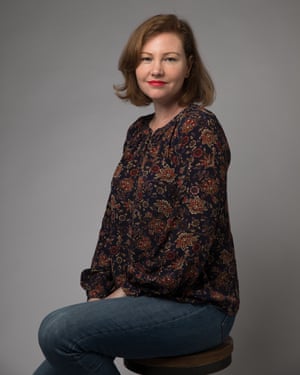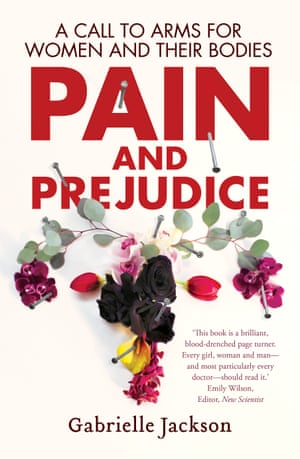Why don't doctors trust women? Because they don't know much about us
The medical community have known for a century that women are living in constant pain. They’ve done nothing about it

It’s frustrating to have questions that don’t get answered. It’s
altogether disturbing to find out that those questions haven’t even been
asked.
When I was diagnosed with endometriosis at age 23, I didn’t know enough to ask the right questions. I assumed my gynaecologist had all the answers, and listened carefully to his thoughtful explanations. I thought I knew it all. Or at least that he knew it all. But I was wrong.
It was only after more than a decade of feeling weak, second-rate, wimpy and writing myself off as a hypochondriac that I started to formulate the questions that needed to be asked. This time the questions weren’t about what was happening to my body. They were about how there could possibly be such a lack of knowledge about a disease that has been in the medical textbooks for more than a century.
A century of diagnosis and medical science still has no idea what
causes endometriosis or how it works, and we are no closer to a cure.
How could this possibly be? And while there are many doctors working in
the field who are making a huge difference to the lives of people with
endometriosis, there are many more who remain ignorant of the disease,
who still push tired old myths about its cures, and who treat people
with the disease as hysterical.When I was diagnosed with endometriosis at age 23, I didn’t know enough to ask the right questions. I assumed my gynaecologist had all the answers, and listened carefully to his thoughtful explanations. I thought I knew it all. Or at least that he knew it all. But I was wrong.
It was only after more than a decade of feeling weak, second-rate, wimpy and writing myself off as a hypochondriac that I started to formulate the questions that needed to be asked. This time the questions weren’t about what was happening to my body. They were about how there could possibly be such a lack of knowledge about a disease that has been in the medical textbooks for more than a century.
Not long after I started looking into this I discovered the problem was worse than I even imagined. As I write in my book, Pain and Prejudice, women wait longer for pain medication than men, wait longer to be diagnosed with cancer, are more likely to have their physical symptoms ascribed to mental health issues, are more likely to have their heart disease misdiagnosed or to become disabled after a stroke, and are more likely to suffer illnesses ignored or denied by the medical profession.
Most shockingly of all, many women are living in constant pain and don’t know that it’s not normal; they don’t appreciate that they don’t have to live like that at all.
I discovered that there are 10 chronic pain conditions that predominantly affect women which have very similar symptoms; and that once a person has one, they’re more likely to accumulate others. Endometriosis, fibromyalgia, chronic fatigue syndrome, irritable bowel syndrome, painful bladder syndrome, migraine headache, chronic tension-type headache, temporomandibular joint disorders, chronic lower back pain and vulvodynia affect at least 50 million US women alone.
I discovered that some of these pain conditions have a high rate of co-occurrence with autoimmune conditions including rheumatoid arthritis, lupus, Sjogren’s syndrome and thyroid diseases.
You know what else I discovered? That these conditions are all beset by delayed diagnosis; that a high proportion of women and gender-diverse people eventually diagnosed with these conditions will first be told they have a mental health condition, or are too concerned about their health.
You know what else I discovered? That many of these conditions can be well-managed if caught early.
Why are women still being treated as hysterical, overly emotional, anxious and unreliable witnesses to their own wellbeing?
Why do doctors still treat their patients who are female, people of colour or gender-diverse differently to their white male patients?
Why don’t they trust us?
The answer turns out to be quite simple. They don’t really know much about us.
As Dr Janine Austin Clayton, the director of the US Office of Research on Women’s Health, told the New York Times: “We literally know less about every aspect of female biology compared to male biology.”
To find out why that is, I had to travel back centuries. From the beginning of medicine, woman’s difference to man has marked her as inferior. In ancient times, it was the womb – the most obvious point of difference – that was thought to be the corrupting force, causing all manner of ills experienced by women. Plato characterised the womb as a voracious animal wandering the female body and sucking its life force. In the early modern era, medicine switched its attention to the nervous system, blaming illness among women on “weak nerves”. In the early 20th century, when the endocrine system was discovered, raging hormones became the chief source of blame, intermittent with our corrupted mental states.

All too often supposed cures involved punishment, intended to turn a “difficult” woman into a “good” one. Clitorises were cut off, wombs and ovaries removed, forced feeding and “rest” were prescribed. Leeches were attached to labia and cervixes, and psychological cruelty was inflicted in the name of restoring health and dignity.
But none of these cures were proven, and most of the causes were entirely theoretical – because women have rarely been studied in detail by medical science. You just need to look at a textbook to see that the default human is a slender white man, and any difference has always been considered a deficit: uninteresting and not worthy of scientific pursuit.
Women weren’t included in clinical trials until the 1990s. While we make up 70% of chronic pain patients, 80% of pain medication has been tested only on men. Even in preclinical trials with cell lines and rodents, males have been favoured over females. Researchers have justified this bias by claiming that oestrous cycles in female rodents – and menstrual cycles in human women – would potentially corrupt results. If that were so, wouldn’t it be quite important to find out before selling the drug to women?
Eight of the 10 prescription drugs taken off the market by the US Food and Drug Administration between 1997 and 2000 owing to severe adverse effects caused greater health risks in women than men. A 2018 study found this was a result of “serious male biases in basic, preclinical, and clinical research”.
Making matters worse, medical students are never taught about this knowledge bias. It just doesn’t come up in medical schools that almost everything we know about human biology comes from the study of men. And maybe, just maybe, the women crowding their waiting rooms – the women who they can’t help – are there not because they’re hysterical or making it up or like being sick or want the attention, but because they are sick and in pain, and medical science has no answers for them.

But women are more than reproductive machines.
And, while women who live in chronic pain aren’t dying horrible deaths in the prime of their lives – like those who died in such large numbers in childbirth or from breast cancer – evidence shows that chronic pain does lead to anxiety, depression and suicide. For many others, it keeps them at home and out of the workforce, unable to fully take part in life.
I wrote this book because too many women are in pain, and that pain is not taken seriously. It is at once expected and denied. This deprives us of our full humanity. We deserve better.

Comments
Post a Comment